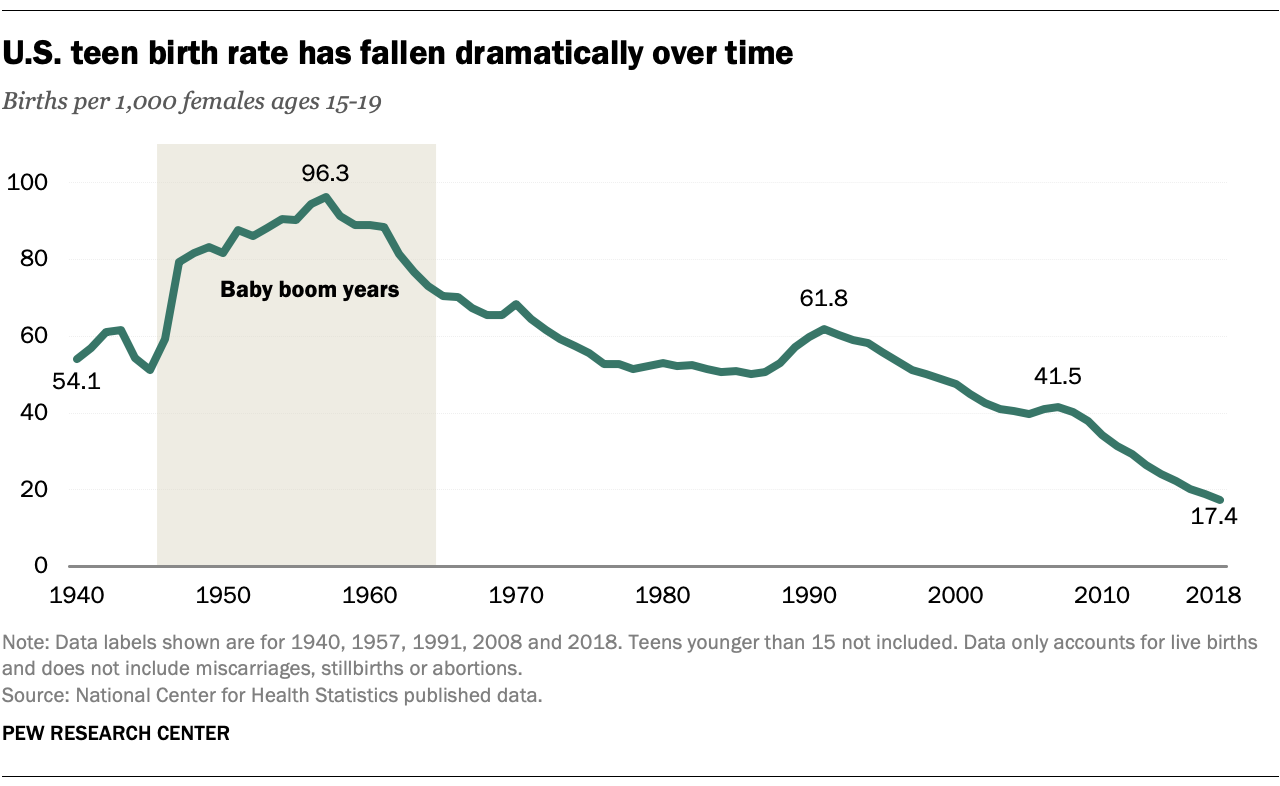
Teen Pregnancy: A Comprehensive Census
Introduction
Teen pregnancy remains a pressing public health concern in the United States, with significant implications for the health and well-being of young mothers and their children. This comprehensive census aims to provide an in-depth analysis of teen pregnancy rates, trends, and associated factors, drawing upon data from various sources to paint a comprehensive picture of this issue.
National Trends
According to the Centers for Disease Control and Prevention (CDC), the teen birth rate in the United States has declined steadily over the past several decades. In 2020, the birth rate among 15-19-year-olds was 18.8 per 1,000, a significant decrease from 41.5 per 1,000 in 1991. However, disparities persist across racial and ethnic groups, with Black and Hispanic teens experiencing disproportionately higher birth rates.
State-Level Variations
Teen pregnancy rates vary widely across states, ranging from 10.6 per 1,000 in New Hampshire to 34.7 per 1,000 in Mississippi. Factors contributing to these variations include socioeconomic conditions, access to healthcare, and cultural norms.
Risk Factors
Research has identified numerous risk factors associated with teen pregnancy, including:
- Poverty and socioeconomic disadvantage: Teens from low-income families are more likely to experience teen pregnancy.
- Lack of education and opportunity: Teens who drop out of school or have low educational aspirations are at higher risk.
- Exposure to violence and trauma: Teens who have experienced violence or trauma are more likely to engage in risky sexual behaviors.
- Peer pressure and social norms: Teens who have friends or family members who have experienced teen pregnancy are more likely to become pregnant themselves.
Consequences
Teen pregnancy has significant consequences for both young mothers and their children. Young mothers are more likely to experience health complications during pregnancy and childbirth, and their children are more likely to have low birth weight, premature birth, and developmental delays. Teen mothers also face challenges in completing their education, finding employment, and providing a stable home for their children.
Prevention Strategies
Numerous evidence-based strategies have been developed to prevent teen pregnancy, including:
- Comprehensive sex education: Providing teens with accurate information about sexual health and contraception is essential for reducing unintended pregnancy.
- Access to contraception: Ensuring that teens have access to affordable and confidential contraception is crucial for preventing unplanned pregnancies.
- Parent-child communication: Open and honest communication between parents and teens about sexual health can help reduce risky behaviors.
- Community-based programs: Community-based programs that provide support and resources to teens and their families can help reduce teen pregnancy rates.
Policy Implications
Addressing teen pregnancy requires a comprehensive approach that involves multiple stakeholders, including policymakers, healthcare providers, educators, and community organizations. Policy interventions that have been shown to be effective include:
- Expanding access to healthcare: Ensuring that teens have access to affordable and confidential healthcare, including reproductive health services, is essential for preventing teen pregnancy.
- Investing in education: Providing teens with high-quality education and opportunities for success can help reduce the risk of teen pregnancy.
- Addressing poverty and inequality: Addressing the underlying socioeconomic factors that contribute to teen pregnancy is crucial for reducing disparities and improving overall health outcomes.
Conclusion
Teen pregnancy remains a complex issue with significant implications for the health and well-being of young mothers and their children. This comprehensive census provides an in-depth analysis of teen pregnancy rates, trends, and associated factors, highlighting the need for continued efforts to prevent teen pregnancy and support young mothers and their families. By implementing evidence-based strategies and addressing the underlying social and economic factors that contribute to teen pregnancy, we can create a healthier and more equitable future for all young people.